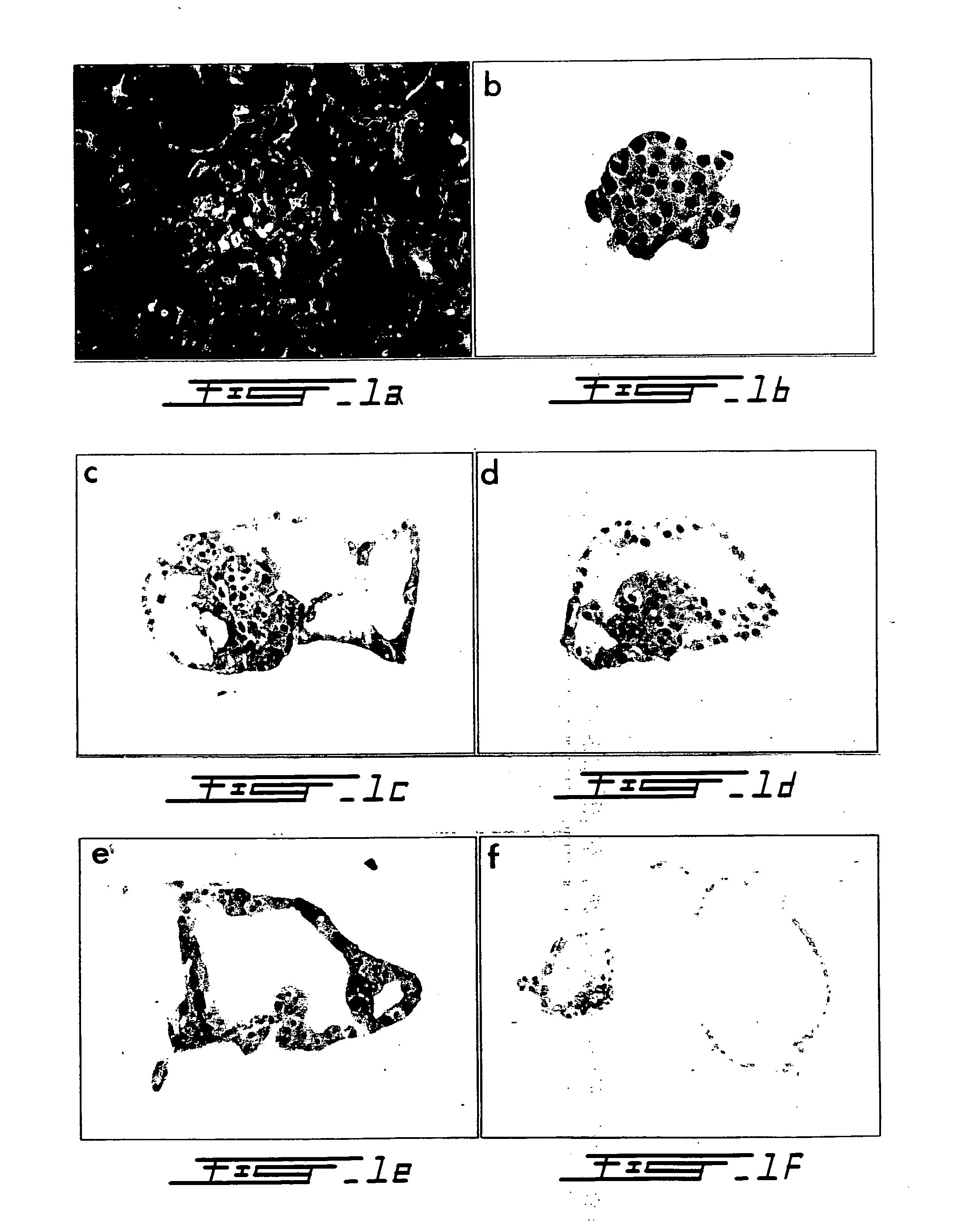Medium for preparing dedifferentiated cells
a technology of dedifferentiated cells and mediums, applied in the field of mediums for preparing dedifferentiated cells, can solve the problems of affecting the metabolism of glucose, affecting the normal function of glucose metabolism,
- Summary
- Abstract
- Description
- Claims
- Application Information
AI Technical Summary
Problems solved by technology
Method used
Image
Examples
example i
Preparation of a Basal Feeding Medium
[0099] The purpose of this study was to elucidate the mechanisms involved in the process of transdifferentiation.
[0100] Canine islets were isolated using Canine Liberase™ and purified on a Euroficoll gradient in a Cobe 2991 Cell Separator. Freshly isolated islets were embedded in collagen type I gel for up to 120 hr and cultured in (i) DMEM / F12 plus cholera toxin (CT); (ii) CMRL 1066 supplemented with CT; (iii) CMRL 1066 supplemented with forskolin, and (iv) CMRL 1066 alone. At 16 hr, intracellular levels of cAMP (fmol / 103 islets), determined by ELISA, were increased in Groups (i)-(iii) (642±17, 338±48, 1128±221) compared to Group iv (106±19, p<0.01). Total intracellular cAMP at 120 hr (integrated area under the curve) coincided with the % of islets undergoing transdifferentiation (63±2, 48±2, 35±3, 8±1), as determined by routine histology, immunocytochemistry for cytokeratin AE1 / AE3, and by a loss of pro-insulin gene expression on in situ hybr...
example ii
Factors Mediating the Transformation of Islets of Langerhans to Duct Epithelial-Like Structures
[0103] Materials and Methods
[0104] Islet Isolation and Purification
[0105] Pancreata from six mongrel dogs of both sexes (body weight 25-30 kg) were resected under general anesthesia in accordance with Canadian Council for Animal Care guidelines (Wang R N, Rosenberg L (1999) J Endocrology 163 181-190). Prior to removal, the pancreatic ducts were cannulated to permit intraductal infusion with Liberase CI® (1.25 mg / ml) (Boehringer Mannheim, Indianapolis, Ind., USA) according to established protocols (Horaguchi A, Merrell R C (1981) Diabetes 30 455-461; Ricordi C (1992) Pancreatic islet cell transplantation. pp99-112. Ed Ricordi C. Austin: R. G. Landes Co.). Purification was achieved by density gradient separation in a three-step EuroFicoll gradient using a COBE 2991 Cell Processor (COBE BCT, Denver, Colo., USA) (London N J M et al. (1992) Pancreatic islet cell transplantation. pp 113-123. ...
example iii
Development of a Novel In Vitro Model to Study Acinar-to-Islet Differentiation
[0147] The aim of this experiment was to develop an in vitro model so that the mechanisms and regulatory determinants of acinar to β-cell transformation can be elucidated. Briefly, human donor pancreata (n=3 donors) were cannulated, infused with Liberase HI and digested according to standard protocol. Pancreatic tissue was separated using a continuous ficoli gradient. Acini were isolated from the densest tissue fractions and stained with dithizone to confirm lack of any insulin immunoreactivity. The acinar tissue was then embedded in type-1 rat tail collagen and cultured in DMEM / F12 supplemented with cholera toxin, EGF, and insulin. As determined by inverted microscopy, after 10 days of culture ˜80% of acini transformed into duct-like cystic structures (FIG. 15).
PUM
| Property | Measurement | Unit |
|---|---|---|
| body weight | aaaaa | aaaaa |
| diameters | aaaaa | aaaaa |
| thickness | aaaaa | aaaaa |
Abstract
Description
Claims
Application Information
 Login to View More
Login to View More - R&D
- Intellectual Property
- Life Sciences
- Materials
- Tech Scout
- Unparalleled Data Quality
- Higher Quality Content
- 60% Fewer Hallucinations
Browse by: Latest US Patents, China's latest patents, Technical Efficacy Thesaurus, Application Domain, Technology Topic, Popular Technical Reports.
© 2025 PatSnap. All rights reserved.Legal|Privacy policy|Modern Slavery Act Transparency Statement|Sitemap|About US| Contact US: help@patsnap.com



